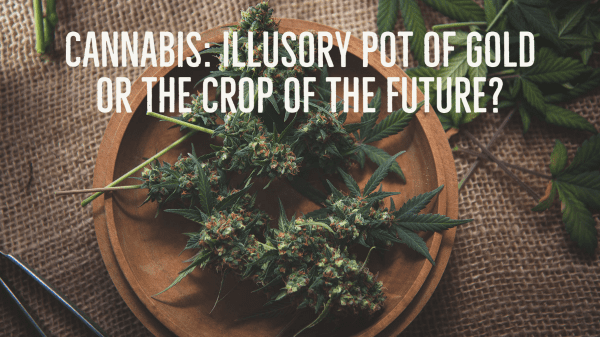Hemp in the United States, whether grown for biomass or cannabis derivatives, has had a wild ride in recent years.
It reached a watershed moment in the 2014 farm bill, which authorized limited production, and the 2018 farm bill loosened restrictions considerably.
New Frontiers Data, a cannabis research firm, touted hemp as a savior for American farmers in 2018, who were beleaguered by low soybean prices as a consequence of a trade war with China.
Partly for this reason, and partly because of the new measures in the 2018 Farm Bill, hemp production soared in 2019, leading to a price crash in 2020.
“Once the farm bill passed in 2018, the industry witnessed a swift uptick in hemp farming as producers tried to cash in on the CBD craze,” writes Kristina Etter on the Cannabis Tech website.
“Unfortunately, with the increased hemp acreage planted in 2019, the market for CBD-rich biomass tanked, dropping to an average of $1 to $5 per pound depending on the region.”
A January 2020 article in Bloomberg News bore the headline, “Hemp Prices Plunge as CBD Demand Falls Short,” noting that prices for hemp biomass had fallen to $10 a pound from $40 a pound the previous July.
An early entrant
Chris Bourne, a partner in Klersun, LLC, a company that specializes in hemp-derived extracts, notes in early 2021 that biomass prices were still low at $10 to $15 a pound.
“People are trying to give it away,” he says. “Farmers have been hitting up extractors to create a value-add. There’s a surplus of oil as well. I was one of the very first farmers to grow it in Oregon; I grew 75 acres.
“We do not grow hemp anymore,” Bourne points out. “Now we contract-farm. We’re finding farmers to grow for us. They could put crops in the ground for pennies on the dollar compared to what we could.”
Klersun contracts with farmers to grow hemp alone, or in rotation with another crop.
“Others are established, multigenerational farmers that grow multiple crops,” says Frederick Schilling, Bourne’s partner.
He says growers are located primarily in Oregon, but with a few in Washington. They include “vegetable growers with annual crops—onions, broccoli, kale, lettuces—think of crops that grow in the Northwest.”
On the other hand, Bourne adds, “I haven’t seen anyone who replaced vegetables with hemp. I’ve seen folks that added it to their rotation and have taken it out.”
The future of hemp and its derivatives are hanging in the balance of the Food and Drug Administration.
Growth is likely to remain in abeyance “until the FDA gives an opinion and greenlights CBD for food and beverages and supplements. That’s going to drive the velocity,” Schilling says.
“You can put CBD in a tincture but can’t label it as a food or a dietary supplement,” Bourne says.
But, he adds, some larger corporations are looking at CBD as an additive to products. “They’re just waiting for the FDA.”
This is an excerpt from the cover story of the May/June 2021 issue of Produce Blueprints Magazine. Click here to read the whole issue.



